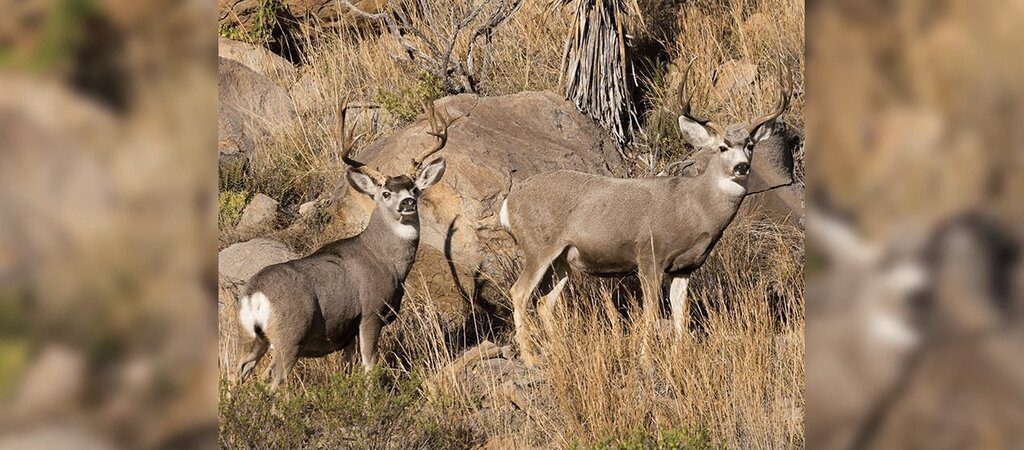
By Will Leschper
Mule deer hunting in Texas has been on a decline in recent seasons, with some notable hot spots simply not producing the quality and quantity that they previously had. Biologists have monitored the situation for a number of years, proposing some changes to hunting regulations. In May, the Texas Parks and Wildlife Commission approved setting a 20-inch minimum outside antler spread of the main beams restriction on mule deer bucks in Briscoe, Childress, Cottle, Floyd, Motley and Hall counties. Shawn Gray, Mule Deer and Pronghorn Program Leader with TPWD, noted the mulie population, in particular the buck figure, is in tough shape in some notable areas of the Rolling Plains and Panhandle. “Over the last 20 to 25 years in the Southeast Panhandle, excessive buck harvest has occurred primarily because of increased lease hunting and the popularity of mule deer hunting,” he said. “This success of buck harvest has affected the mule deer sex ratio in the area, with our survey data indicating a postseason sex ratio of five to six does per buck.” “In addition, intensive buck harvest has also impacted the buck age structure and data highlight the fact that mature mule deer bucks in the Southeast Panhandle are rare. Because of this, staff over the last several years have received many requests from landowners and hunters to improve the buck age structure of the mule deer herd in this area of the Panhandle.”
Different restriction criteria
Gray noted that most western states have tried an antler and point restriction, such as a minimum of four points on one side, with no significant improvement in buck age structure. This is because many young deer meet these minimum requirements, he said. “We are proposing a different antler restriction criteria. Using the white-tailed deer antler restriction as a model, staff have collected data on mule deer captured during ongoing research projects and hunter-harvested mule deer in the Panhandle to estimate the ear-tip-to-ear-tip spread of bucks standing in the alert position,” Gray said. “The average ear-tip-to-ear-tip spread for mule deer bucks standing in the alert position is 21 inches. Our main goal is to get more mule deer bucks into older age classes. Most unbranched antlered bucks are yearlings, and allowing more yearlings to be harvested can significantly impact future buck age structure, especially during drought. “Mule deer populations are much lower than white-tailed deer populations, and can be more sensitive to overharvest. Preliminary data analysis suggests that an antler restriction with an outside spread of 20 inches should protect at least 80 percent of 1½- to 3½-year-old bucks, and about 90 percent of bucks 5 years old would be available for harvest.” Gray said the antler restriction will not apply to MLDP properties. As part of the MLDP Program, TPWD sets property specific bag limits for mulies, and they’re generally conservative, he noted. Hunters who take mule deer, whitetails, elk, red deer or other CWD susceptible species within the Trans-Pecos, Panhandle, and South-Central Texas CWD Containment and Surveillance Zones must bring their animals to a TPWD check station within 48 hours. TPWD also continues to urge voluntary sampling of hunter-harvested deer outside these zones.


